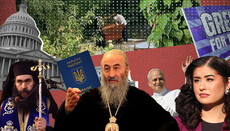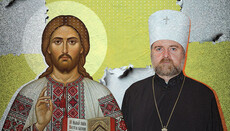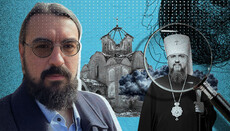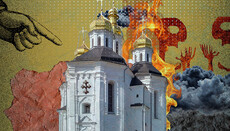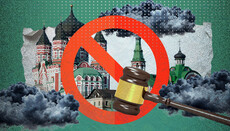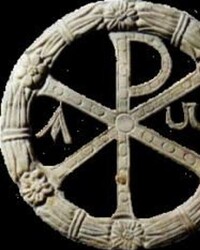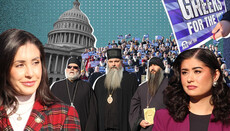"Tomosology" of the Patriarchate of Constantinople. Part I
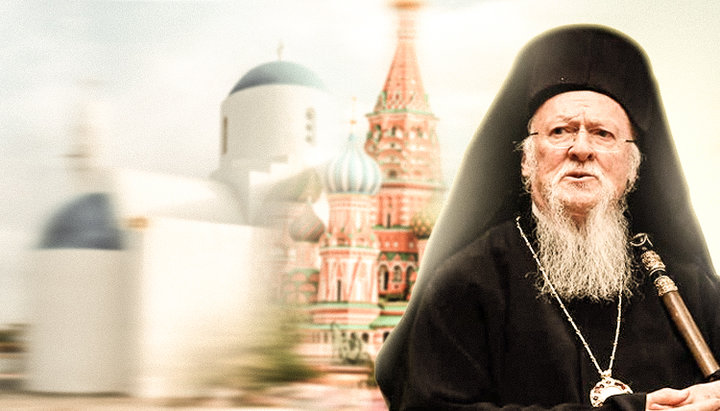
The Phanar's ideology of the "first without equals" did not emerge immediately. Its formation is well traced in the tomoses granted by the Church of Constantinople.
The tomoses of autocephaly of various Orthodox Churches granted by the Orthodox Church of Constantinople are not just documents, they are monuments of history and ecclesiology. They can be used to trace changes in the teaching of the Orthodox Church of Constantinople about itself and autocephaly, about the role of Christ in the Church, about the meaning of the canons and councils.
Usually, the Ecumenical Councils, approving the wordings of previously not formulated dogmas, only formalized the Tradition of the Church in those issues that aroused controversy.
In the case of the tomoses of the Orthodox Church of Constantinople, we see a change in the content of the teaching about the Church. We see not only new formulas but their direct contradiction both to the previous formulas and to the canonical heritage of the Ecumenical Councils. We can trace the genesis of the formation of the new doctrine of the Church, which at first filled the "gaps" in canon law, then began to supplant it and ultimately came into conflict with it. After that, it also infringed on the ecclesiological dogmas, approved not only by the Ecumenical Councils but also set forth directly in the Gospel and the Epistles of the Holy Apostles:
Christ is the head of the Church (Eph. 5:23);
God placed all things under His feet and appointed Him to be head over everything for the Church (Eph. 1:22);
For as in one body we have many members,[a] and the members do not all have the same function, so we, though many, are one body in Christ, and individually members one of another (Rom. 12: 4-5).
In the case of the tomoses of the Orthodox Church of Constantinople, we see a change in the content of the teaching about the Church. We see not only new formulas, but their direct contradiction both to the previous formulas and to the canonical heritage of the Ecumenical Councils. We can trace the genesis of the formation of the new doctrine of the Church, which at first filled the "gaps" in canon law, then began to supplant it and ultimately came into conflict with it.
Perhaps, due to the obvious contradiction between the tomoses of the COC of various years, in 2020 they became unavailable on the website of the Patriarchate of Constantinople itself, where they could easily be found a year ago. Too much attention to this topic arose after the Tomos of autocephaly was granted to the "Orthodox Church of Ukraine".
Tomoses, unlike various articles and statements of the COC hierarchs, including its patriarch, cannot be considered private theological opinions or subjective understanding of the canons. A tomos is an official document expressing the "consent of the fathers" of the COC, adopted by its Holy Synod, which in fact has, in the Constantinople tradition, rights similar to those of the Council of Bishops in the Russian Church and some other Churches. That is, the tomos is, if not an official expression, then an official reflection of the teachings of the Orthodox Church of Constantinople.
As you know, in January 2019, the Patriarchate of Constantinople granted the Tomos of autocephaly to the so-called "Orthodox Church of Ukraine" ("OCU"), called in this document "Most Holy Church of Ukraine". This event caused a split in the Orthodox world, with the main antagonists being the Constantinople and Moscow Patriarchates. The main topics that caused controversy and conflicts triggered by this event are the following:
- the dispute over the canonical belonging of the territory of modern Ukraine;
- the possibility of granting autocephaly to schismatics and an unauthorized assembly deprived of apostolic succession;
- the right of the See of Constantinople to make decisions on the fate and autocephaly of parachurch entities that have broken away from other Local Churches;
- the right of the primacy of the Orthodox Church of Constantinople in the Orthodox world;
- the content of the tomos of autocephaly.
The last point caused especially fierce disputes not even between the supporters of the Moscow and Constantinople Patriarchates but among the Ukrainian schismatics themselves, who eventually accepted the Phanar’s tomos as a temporary forced compromise since the content of the document did not even suit them. In addition to depriving them of their previously self-proclaimed status of “Patriarchate”, the OCU received a number of other restrictions in rights and status. Its "autocephalous status" gave fewer rights in self-government than the Ukrainian Orthodox Church has within the Russian Orthodox Church.
However, this issue involves not only the interests of Ukrainian schismatics, the canonical UOC, and even the Moscow and Constantinople Patriarchates. This issue affects the overall organization of the Orthodox world, the relationship of all Local Churches and, moreover, the following dilemma: What is Christ for His Church – Her Head or only an object of faith?
Let's try to figure out how atypical the tomos granted by the Phanar to the "OCU" was, and what is the genesis of the "tomosology" of the Patriarchate of Constantinople, along with other Local Churches.
Of the currently existing autocephalous Orthodox Churches, as you know, the most ancient ones are the Churches of Jerusalem, Alexandria and Antioch, founded by the holy apostles. Later, their number was supplemented by the Orthodox Church of Constantinople, whose See gained importance after a new capital of the Roman Empire, Constantinople, was founded by Emperor Constantine in 330. Its status of "privilege of honour after the bishop of Rome" was confirmed by the Canon 3 of the II Ecumenical Council in 381.
The autocephaly of the Church of Cyprus was received from the Church of Antioch and approved by the III Ecumenical (Ephesian) Council, namely its Canon 8, in 431. In the 5th century, the Georgian Church received autocephaly from Antioch, and later, after a series of historical peripeteia, autocephaly was confirmed at the Local Council of Antioch in 1057.
All the Local Orthodox Churches that arose after that received autocephaly from the Constantinople or Russian Church (which in the latter case became a stumbling block between these Churches).
The Russian Church
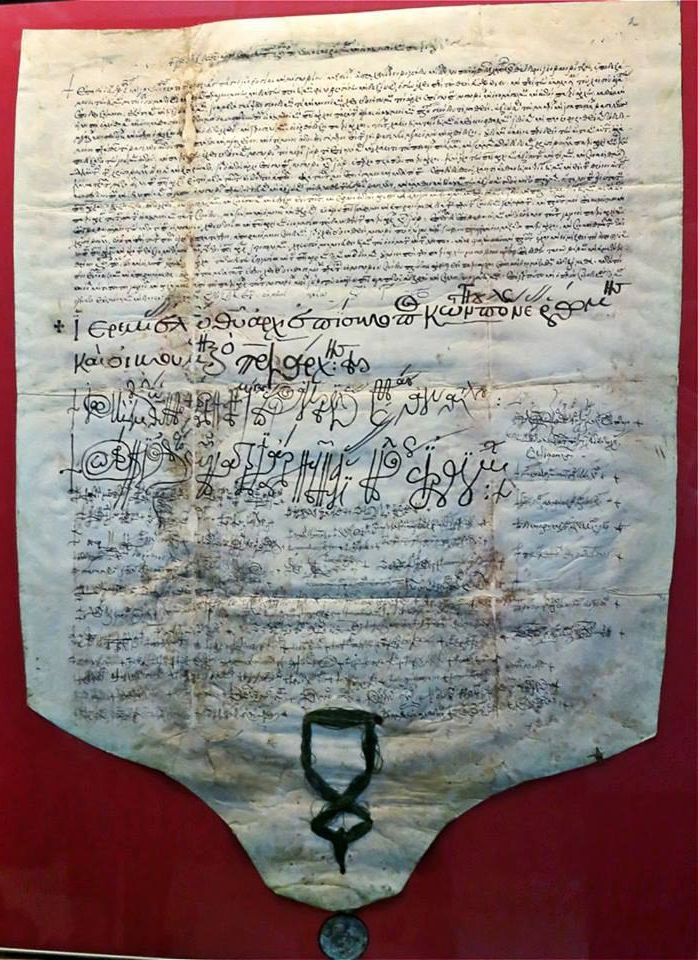
For a basic comparison, we take the Tomos of autocephaly of the Russian Church dated 1590 as the only document of this kind relating to the present Local Church. We will focus on the key points of this document. Follow the link for the full text of it.
So, the Tomos of autocephaly of the Russian Church has certain features.
1. The Primate of the new autocephalous Church, the Archbishop of Moscow (in the terminology of the document) is immediately declared Patriarch. We do not see any attempt to belittle his title as was observed in a number of other cases of granting autocephaly.
2. The decision has a conciliar character, approved not only by the Patriarch of Constantinople but also by all key ancient patriarchs.
3. By status, the Patriarch of Moscow is equal to the rest of the patriarchs and is not belittled before them.
4. The new autocephaly is not restricted by Constantinople either in matters of preparing myrrh or its own church court, or its internal structure.
The Greek Church
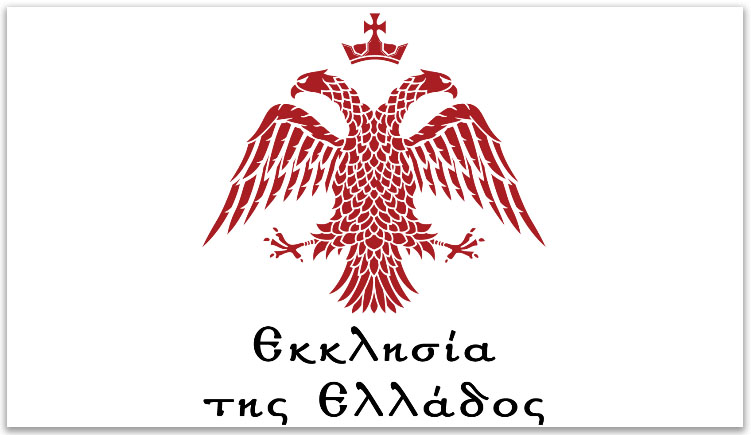
260 years later – in 1850 – the Orthodox Church of Constantinople granted autocephaly to the Church of Greece, which was self-proclaimed by the political authorities of Greece in 1833. Read the Tomos of the Church of Greece here.
In this Tomos, the terms of autocephaly significantly differ from those that could be seen in the Russian Church case.
1. We do not see such conciliarity behind the Tomos as behind the Letter of autocephaly of the Russian Church. Nevertheless, certain signs of conciliarity are still present. In addition to the signature of the Patriarch and members of the Holy Synod of the Church of Constantinople, the Tomos is signed by Patriarch Cyril of Jerusalem. Thus, it was an act of at least two Local Churches.
2. The Primate of the Church of Greece does not receive the status of patriarch.
3. The Tomos regulates the composition of the Synod of the Church of Greece.
4. The Tomos prescribes that the Church of Greece receives myrrh from the Church of Constantinople.
5. Interaction with other Local Churches in resolving issues of general importance is prescribed to be carried out through the Orthodox Church of Constantinople.
In the case of the Church of Greece, we can see a kind of "curtailed autocephaly", in which Athens finds itself in a deliberately dependent position on the Сhurch of Constantinople in the matters of myrrh, external relations and independent determination of the composition of internal government bodies.
Thus, in the case of the Church of Greece, we can see a kind of "curtailed autocephaly", in which Athens finds itself in a deliberately dependent position on the Сhurch of Constantinople in the matters of myrrh, external relations and independent determination of the composition of internal government bodies.
At the same time, it is important to note that, despite these restrictions in the text of the document, the Church of Greece is recognized as equal to the Church of Constantinople, and its Synod is recognized as a “fellow in Spirit” of the Church of Constantinople and “any other Local Orthodox Church”. It is also particularly important to highlight that the Lord Jesus Christ is called the Head of the entire Catholic Church. This feature of the document, which is self-evident for Orthodox Christians, will no longer be so “obvious” in the 21st century.
The Serbian Church
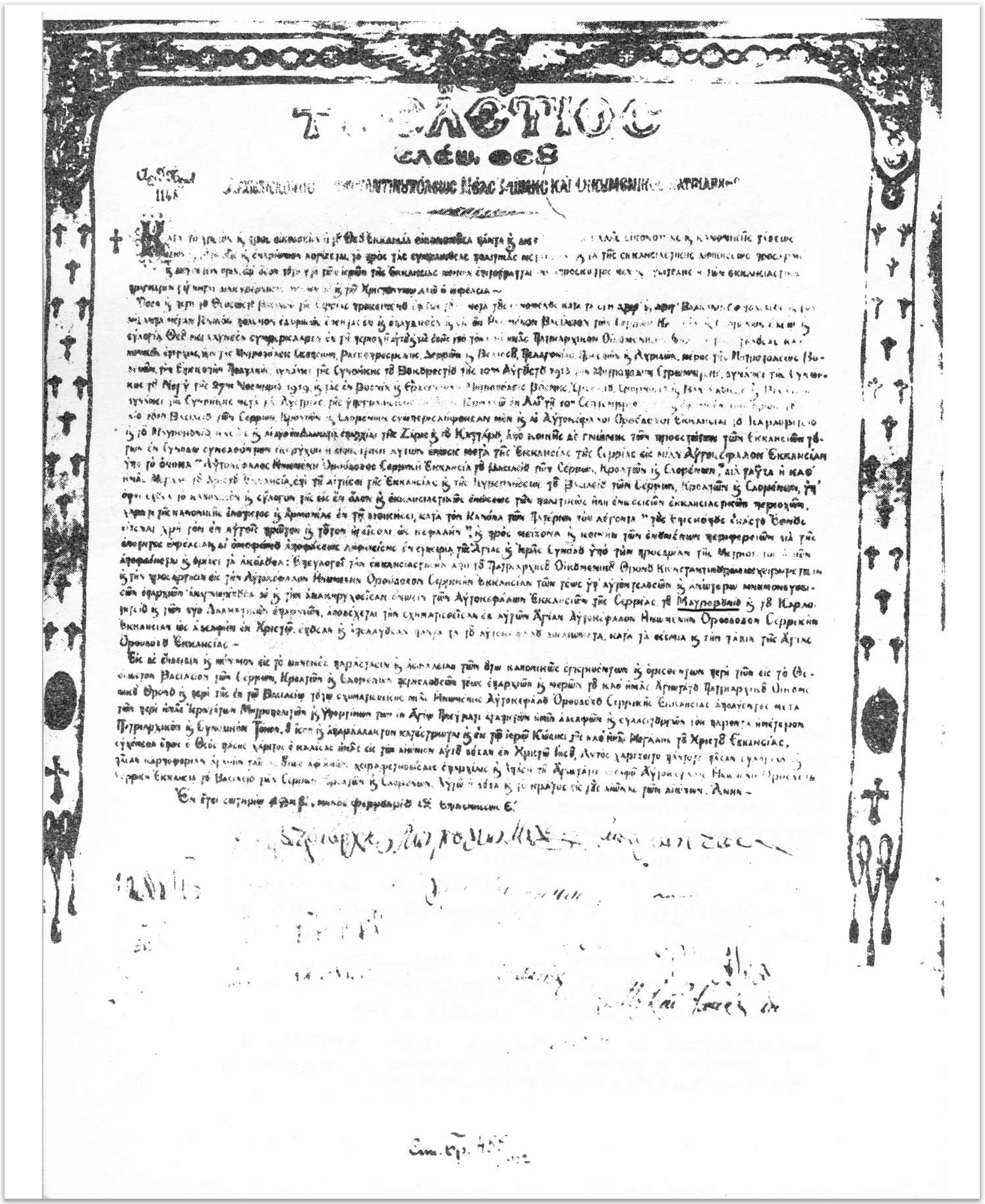
In 1879, 29 years later, Constantinople granted autocephaly to the Serbian Church, thereby reviving the Patriarchate of Peć, which is succeeded by the Church of Serbia. This is done at the request of the authorities of liberated Serbia.
The Tomos of autocephaly of the Serbian Orthodox Church was granted by Patriarch Joachim III of Constantinople. For more detail read here.
Like the Greek Tomos, the text of the document says that the Head of the Church, like all Orthodox Churches, is the God-Man and our Saviour, Lord Jesus Christ. The Serbian Church is named the Sister Church of the Church of Constantinople.
Let's try to analyze the text of the Tomos.
1. As in the case of the Church of Greece, the Primate of the new autocephaly does not receive the status of patriarch, despite the fact that historically this status was held by the Primate of the Church of Peć, which was succeeded by the Serbian Church. This status will appear for the SOC only in 1920, after numerous historical events that influenced this issue.
2. Unlike the Tomos of the Church of Greece, the document does not regulate the procedure for forming the Holy Synod. Instead, there is an abstract reference to the evangelical teaching and tradition of the Church. That is, in fact, this issue is entrusted to the Serbian Church itself for consideration.
3. Like the Church of Greece, the Serbian Church should receive myrrh from Constantinople.
4. Also, the issue of relations with other Local Churches is not mentioned and, accordingly, there is no mention of Constantinople's monopoly on its moderation.
5. The text contains an important mention of the independence of the Local Churches from each other.
6. Like the Greek Tomos, the text of the document says that the Head of the Church, like all Orthodox Churches, is the God-Man and our Saviour, Lord Jesus Christ.
7. The Serbian Church is named the Sister Church of the Church of Constantinople.
The Romanian Church

6 years later, in 1885, the See of Constantinople recognized the autocephaly of the Romanian Church, which had previously been self-proclaimed in 1865. Follow this link to read the text of the Tomos of autocephaly.
Like the previous tomoses, the document says that the Head of the Church is the Lord Jesus Christ. The Romanian Church is named the Sister Church of the Church of Constantinople.
When analyzing this Tomos, we see clauses similar to the previous document received by the Serbian Church.
1. The Romanian Church also did not receive patriarchal status along with autocephaly. The status of Patriarchate was granted to the Church in 1925.
2. Unlike the Tomos of the Church of Greece, the document does not regulate the procedure for forming the Holy Synod.
3. The issue of receiving myrrh is not mentioned in the document. Instead, there is an abstract formulation “ask and receive” just like other autocephalous Churches.
4. The issue of relations with other Local Churches is spelt out as the right of the Romanian Church without indicating any monopoly of Constantinople on its moderation. If in the case of the Greek Tomos, the monopoly of Constantinople is fixed, in the case of the Serbian Church the monopoly is not indicated, in the case of the Romanian Church, the wording excludes such a monopoly.
5. Like the previous tomoses, the document says that the Head of the Church is the Lord Jesus Christ.
6. The Romanian Church is named the Sister Church of the Church of Constantinople.
The Polish Church
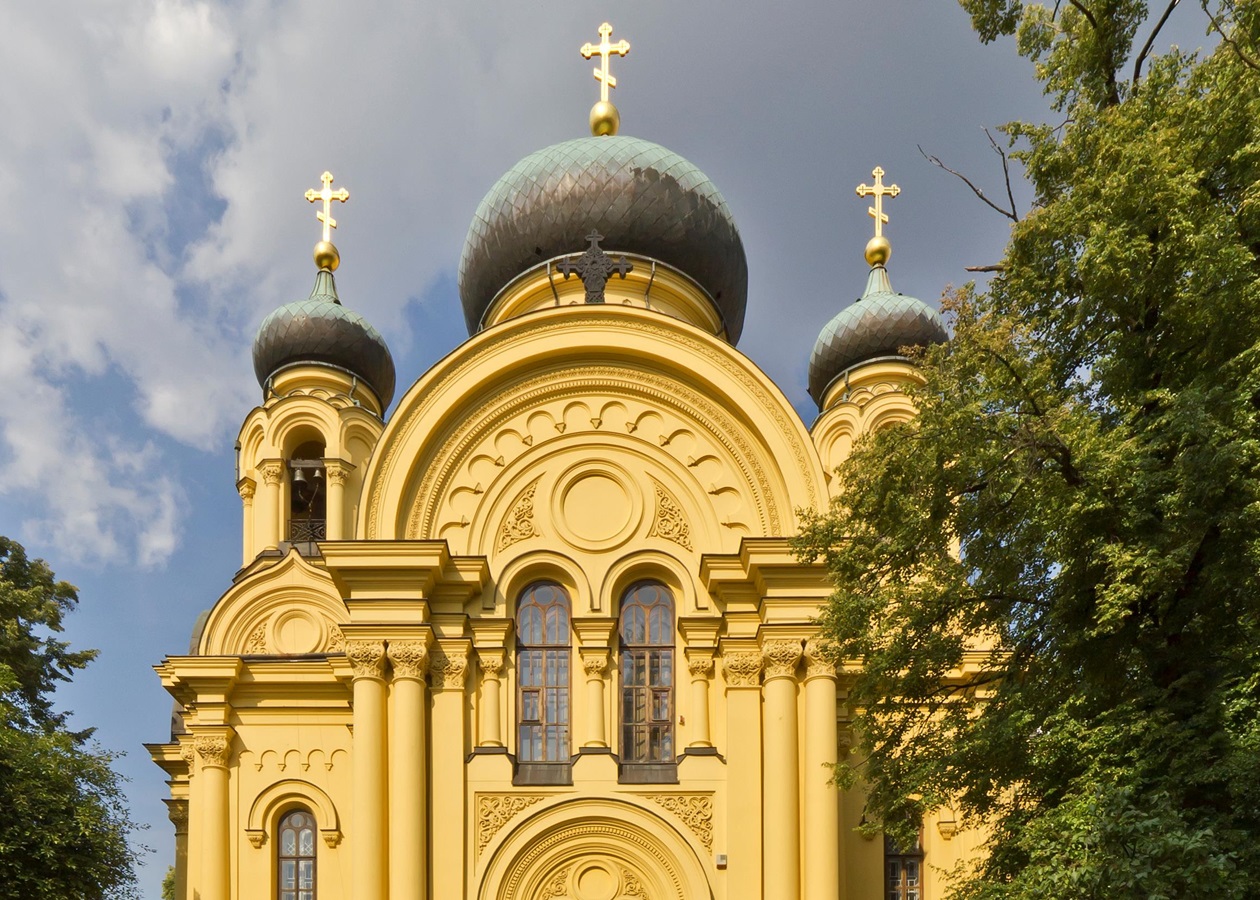
The first Tomos of autocephaly in the twentieth century was issued by Constantinople in special circumstances. For the first time, the Orthodox Church of Constantinople proclaimed autocephaly to the bishops who were not in its clergy outside of its canonical territory. In 1923, the See of Constantinople proclaimed the autocephaly of the Polish Orthodox Church, which had previously been autonomous within the Russian Orthodox Church (later the leaders of the Polish Church would repent for schism, and autocephaly would be granted to them by Moscow in 1948).
Due to this specificity of the Tomos, a significant part of it is made up of very vague explanations that the Polish territory belongs historically to the lands of the Kiev Metropolis, the accession of which "to the Holy Moscow Church took place not according to the canonical rules". Follow the link for details.
In the case of the Polish Church, we see a tendency of increasing the number of restrictions.
The twentieth century brought the collapse of the Ottoman Empire. Along with that, the influence of the Orthodox Church of Constantinople in the empire decreased dramatically. The territories of other Local Churches, formerly part of the Ottoman Empire, remained outside the new Turkey. This meant that the power of the Patriarch of Constantinople, who was previously the ethnarch of all Orthodox Christians in the Ottoman hierarchy, was lost. A significant part of the Greek parishioners living in the territory of the Turkish Republic was massacred by the Turks or forced to migrate to Greece. The Ecumenical Throne was losing its territory, power, influence and authority. And it was during this period that the practice of granting tomoses with the powers of the Local Churches reduced in favoгr of Constantinople was reanimated. As we see earlier, in the 19th century, this practice of significant restrictions on independence was only in the case of the Greek Church. The subsequent tomoses mentioned above were not of that nature.
In the case of the Polish Church, we see a tendency of increasing the number of restrictions.
1. The Polish Church does not receive the status of Patriarchate.
2. The document does not regulate the procedure for forming the Holy Synod, which favourably distinguishes this Tomos from the Tomos of the Greek Church.
3. The Tomos prescribes the monopoly of Constantinople to give myrrh to the Polish Church, as it was seen in the Tomos of the Greek Church.
4. The Tomos stipulates the Phanar's monopoly on the moderation of relations between the Polish Church and other Local Churches.
At the same time:
5. The Lord Jesus Christ is recognized as the head of the Church.
6. The Polish Church is named the Sister Church of the Church of Constantinople.
The Albanian Church
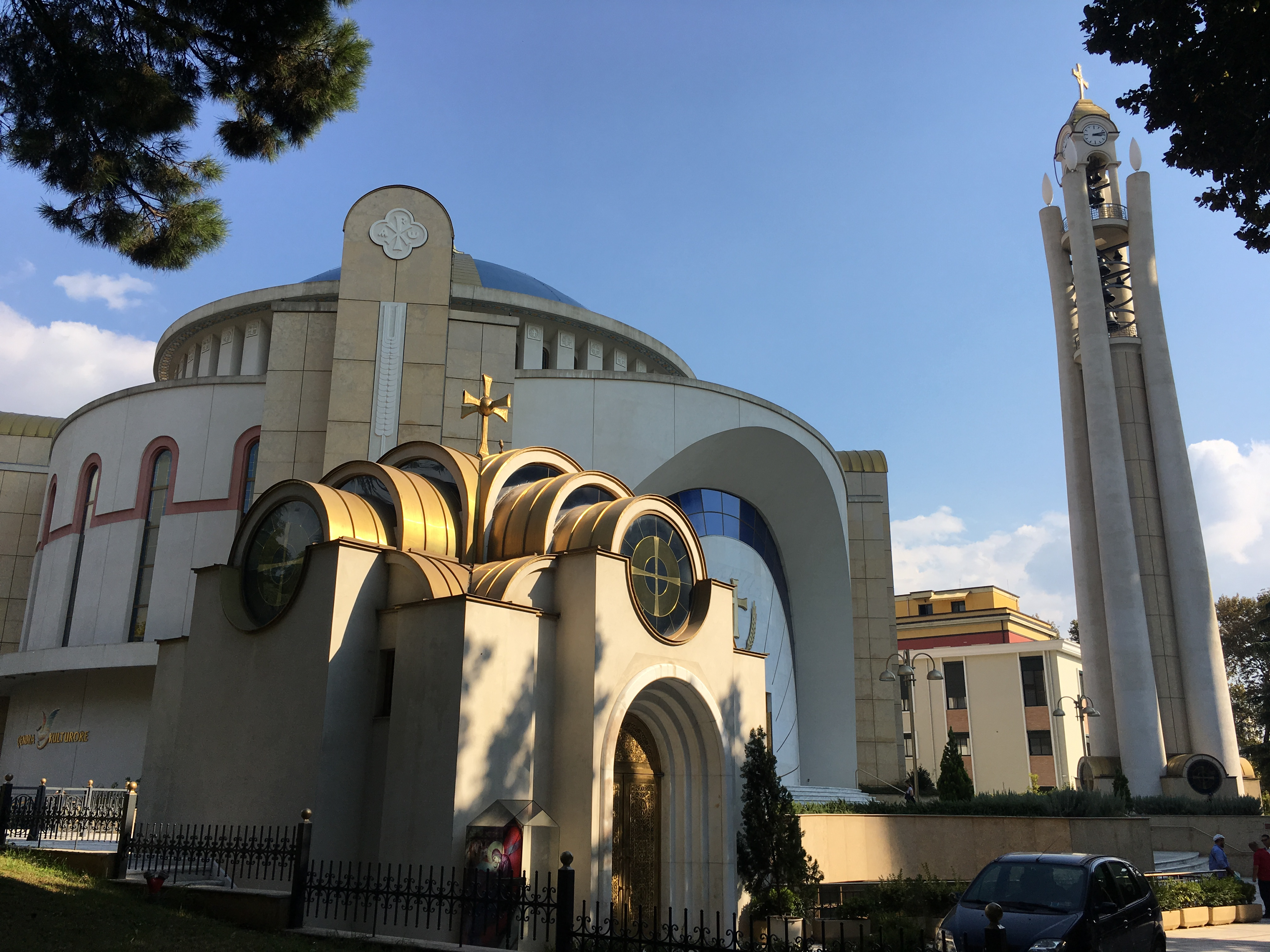
The Resurrection Cathedral in Tirana
The revived practice of "curtailed" tomoses, after the Polish Church, is enshrined in the Tomos of autocephaly granted to the Church of Albania in 1937 (self-proclaimed in 1922-1929).
This Tomos is similar in all сontent-related points to the Tomos of the Polish Church. Its only difference is the change in symbols: in addition to the term "Sister Church", the text contains twice an emphasis on the role of the Patriarchate of Constantinople as "Mother Church".
(To be continued).
TG channel «Лабарум. Сим победиши»
